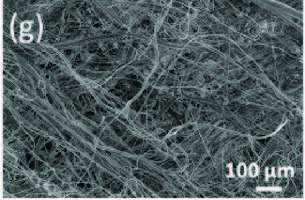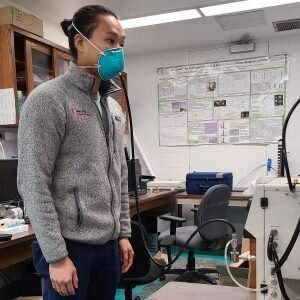Dry heat disinfecting of N95 mask works, preserves fit

Entering a third year of the COVID-19 pandemic and the latest infection surge nationwide comes with many challenges. One of those is for a continued adequate supply of masks, including the often used N95 respirator masks for healthcare and other settings. A study led by Stony Brook University researchers discovered that a readily available method using dry ovens can be used to disinfect N95s for reuse, in settings where new masks may not be available. Their findings are published in PLOS ONE.
To combat any shortages of N95 masks during the pandemic, many institutions were forced to search for other alternatives to protect health care providers and their patients. While some studies have evaluated the impact of various methods of decontamination on how well masks filter viral-sized particles, this study adds to such research and also addresses the equally important concept of maintaining proper mask fit after decontamination.
"Our study demonstrated that treatment of N95 face masks using dry heat was sufficient to inactivate COVID-19, while preserving the ability of these masks to filter aerosolized particles for potentially exposed workers," summarizes Kenneth Shroyer, MD, Ph.D., lead author and the Marvin Kushner Professor and Chair of Pathology at the Renaissance School of Medicine at Stony Brook University.
Since heat is potentially more readily accessible than other methods of decontamination in many healthcare facilities, the researchers used dry heat sterilization to disinfect the masks. They also used X-ray diffraction, Raman spectroscopy, contact angle, and electron microscopy collected at the Center for Functional Nanomaterials—a U.S. Department of Energy (DOE) Office of Science user facility at DOE's Brookhaven National Laboratory—to test for changes in the material of N95 masks post decontamination.

By contrast, other methods for disinfection, including treatment with hydrogen peroxide vapor, may be equally effective in specially equipped facilities but are usually not available in most hospitals or outpatient clinical care facilities.
Dr. Shroyer and colleagues also tested autoclaving, which is widely available in most hospitals and is a proven method of sterilization but found that this caused the fit of the respirator onto the user's face to fail. Thus, the researchers ruled out autoclaving as a safe method to decontaminate N95 masks.
The research involved experts from the School of Medicine, the College of Engineering and Applied Sciences, the College of Arts and Sciences, the Institute for Electrochemically Stored Energy, and the School of Marine and Atmospheric Sciences (SoMAS), along with colleagues in the Interdisciplinary Science Department and the Center for Functional Materials at Brookhaven National Laboratory.
For additional details about the initial studies that served as the foundation for this study—which was launched during the first wave of the pandemic in April 2020—see this story.
Dr. Shroyer emphasizes that the findings from the study highlight the importance of both optimal disinfection and mask fit and suggest that when no other decontamination alternatives are available, N95 masks can be reused after dry heat treatment to ensure the safety of health care workers.
More information: John G. Yuen et al, Dry heat sterilization as a method to recycle N95 respirator masks: The importance of fit, PLOS ONE (2022). DOI: 10.1371/journal.pone.0257963




















